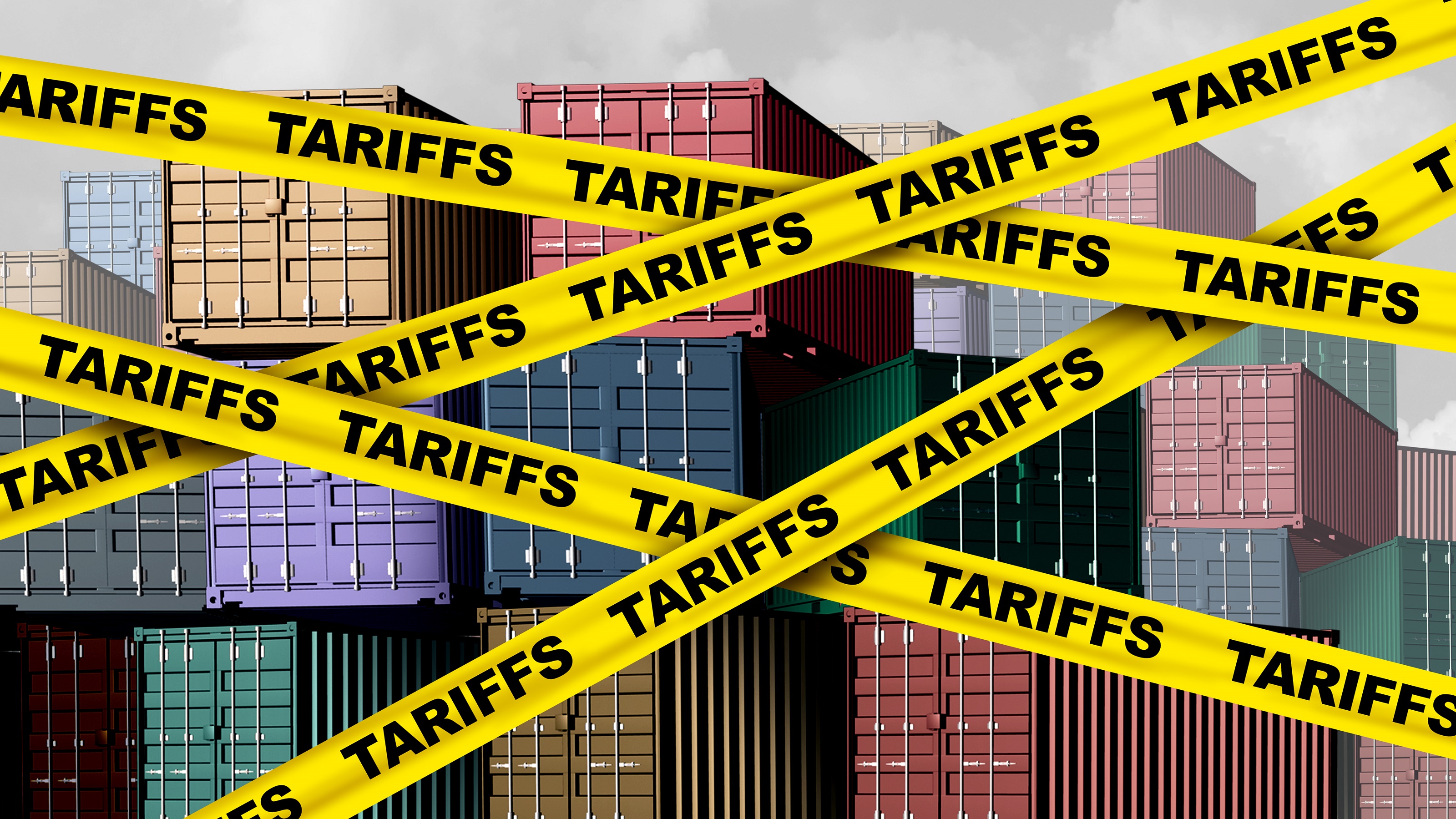Protect Your Nest Egg From a Volatile Market
As you approach retirement, you need to be more aware of sequence risk and adjust your portfolio accordingly.

The dream of a secure and relaxing retirement seems to grow more and more elusive with each passing year.
Part of the reason: The onus is on the individual more than ever to build a healthy retirement nest egg, often depending on the stock market to help fuel that growth.
And, as everyone knows, the stock market can be fickle. Today's gains can be wiped out by tomorrow's losses.

Sign up for Kiplinger’s Free E-Newsletters
Profit and prosper with the best of expert advice on investing, taxes, retirement, personal finance and more - straight to your e-mail.
Profit and prosper with the best of expert advice - straight to your e-mail.
Many people will recall that retirement once involved what could be thought of as a three-legged financial stool. Social Security and personal savings were two of those legs, and they remain, even if they appear wobbly at times. But for most people, the stool's third leg—a pension—has disappeared.
That puts even more pressure on making sure your savings is strong and, as you near retirement, protected from a volatile market that, on one bad day, could wash away decades of sacrifice on your part.
In short, the thing that can affect you most in retirement is an unlucky sequence of returns.
What does that mean? Simply this: When you're saving for retirement, the order of your gains and losses usually doesn't have a major impact because, over time, they tend to average out.
That changes once you begin making withdrawals from your retirement savings. Big losses in the first years of retirement can be especially devastating because your portfolio's value now is being hit by a double whammy—the market drop and you taking out money to live on.
That means, when the market turns around and you start experiencing plus years, you have a much more difficult time recovering because your balance dropped so low. And on top of that, you're still withdrawing money, making any overall market gain less valuable for you as an individual.
A huge loss early in retirement also means that the withdrawal amount you need to maintain your lifestyle begins to represent a higher percentage of your overall portfolio.
To show you what I mean, think of the rule-of-thumb that you should plan to withdraw 4% of your savings each year in retirement.
Here's how a volatile market can wreak havoc with that 4% rule. Hypothetically, let's say you retired at 66 with $1 million in savings and decided that withdrawing $40,000 (4%) each year would provide you what you needed to live on when coupled with Social Security.
So far, so good.
But it wasn't so good in 2008 when the market tumbled drastically, cutting some portfolios in half. Suddenly, the value of that $1 million retirement savings might have been $500,000 if it was all allocated in investments subject to stock market volatility, and a $40,000 withdrawal would be 8%, not 4%, or your portfolio.
It would take some extraordinarily great years in the market to recover from that, especially with you continuing to lower the principal each year with your withdrawals.
That's why as you near retirement you want to re-examine your investments to see how you can lower your portfolio's exposure to market volatility.
Portfolio planning involves more than investing in stocks, crossing your fingers and hoping it all works out. You want to make sure you are diversified beyond stocks and bonds. Other places you could allocate your assets could include real estate, commodities and annuities, but you'll want to speak with your financial adviser to determine what might work best for your individual situation.
Sure, the low-volatility approach means you'll miss out on any amazing years with 30% gains in the market.
Don't beat yourself up too much, though.
You'll also dodge those years when the market crashes, leaving you with no good way to recover.
Kim MacCormack contributed to this article.
GFPC is not responsible for the views and opinions contained herein, and makes no representations or warranties about the accuracy, reliability, completeness or timeliness of the content, and does not recommend or endorse any specific information herein.
Get Kiplinger Today newsletter — free
Profit and prosper with the best of Kiplinger's advice on investing, taxes, retirement, personal finance and much more. Delivered daily. Enter your email in the box and click Sign Me Up.

Jared Elson is a Series 65 Licensed Investment Adviser Representative (IAR) and the CEO of Authentikos Advisory. Following a 10-year career with Yahoo, Jared identified an acute need for sound financial counsel in the tech industry and has excelled in giving tech professionals the tools they need to grow and preserve their wealth.
-
 Before You Invest Like a Politician, Consider This Dilemma
Before You Invest Like a Politician, Consider This DilemmaAs apps that track congressional stock trading become more popular, investors need to take into consideration some caveats.
By Ryan K. Snover, Investment Adviser Representative
-
 How to Put Together Your Personal Net Worth Statement
How to Put Together Your Personal Net Worth StatementNow that tax season is over for most of us, it's the perfect time to organize your assets and liabilities to assess your financial wellness.
By Denise McClain, JD, CPA
-
 Before You Invest Like a Politician, Consider This Dilemma
Before You Invest Like a Politician, Consider This DilemmaAs apps that track congressional stock trading become more popular, investors need to take into consideration some caveats.
By Ryan K. Snover, Investment Adviser Representative
-
 How to Put Together Your Personal Net Worth Statement
How to Put Together Your Personal Net Worth StatementNow that tax season is over for most of us, it's the perfect time to organize your assets and liabilities to assess your financial wellness.
By Denise McClain, JD, CPA
-
 Bouncing Back: New Tunes for Millennials Trying to Make It
Bouncing Back: New Tunes for Millennials Trying to Make ItAdele's mournful melodies kick off this generation's financial playlist, but with the right plan, Millennials can finish strong.
By Alvina Lo
-
 Financial Steps After a Loved One's Alzheimer's Diagnosis
Financial Steps After a Loved One's Alzheimer's DiagnosisIt's important to move fast on legal safeguards, estate planning and more while your loved one still has the capacity to make decisions.
By Thomas C. West, CLU®, ChFC®, AIF®
-
 Two Don'ts and Four Dos During Trump's Trade War
Two Don'ts and Four Dos During Trump's Trade WarThe financial rules have changed now that tariffs have disrupted the markets and created economic uncertainty. What can you do? (And what shouldn't you do?)
By Maggie Kulyk, CRPC®, CSRIC™
-
 I'm Single, With No Kids: Why Do I Need an Estate Plan?
I'm Single, With No Kids: Why Do I Need an Estate Plan?Unless you have a plan in place, guess who might be making all the decisions about your prized possessions, or even your health care: a court.
By Cynthia Pruemm, Investment Adviser Representative
-
 Most Investors Aren't as Diversified as They Think: Are You?
Most Investors Aren't as Diversified as They Think: Are You?You could be facing a surprisingly dangerous amount of concentration risk without realizing it. Fixing that problem starts with knowing exactly what you own.
By Scott Noble, CPA/PFS
-
 Will My Children Inherit Too Much?
Will My Children Inherit Too Much?If you worry about how your children will handle an inheritance, you're not alone. Luckily, you have options — from lifetime gifting to trusts — that can help.
By Mallon FitzPatrick, CFP®, AEP®, CLU®